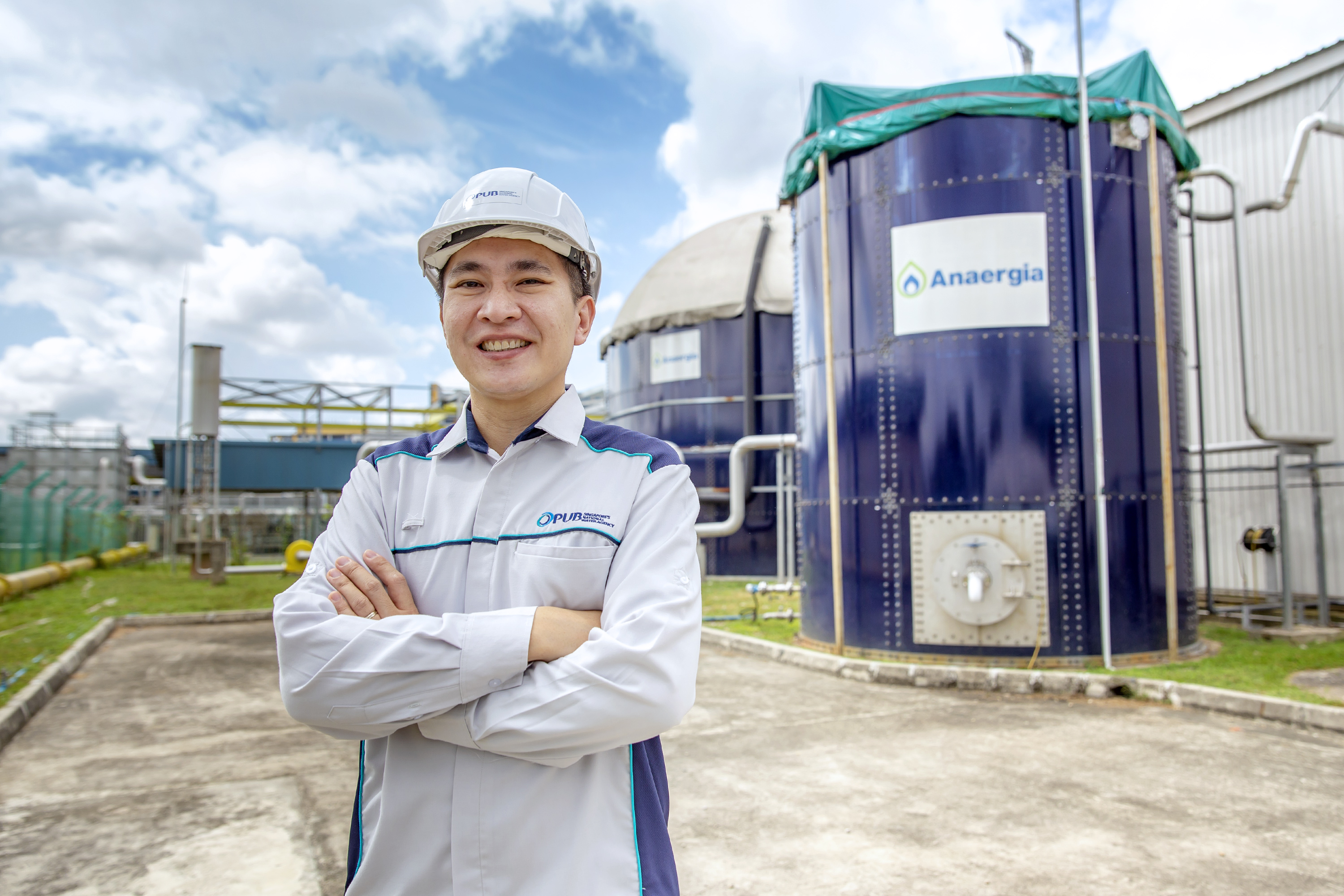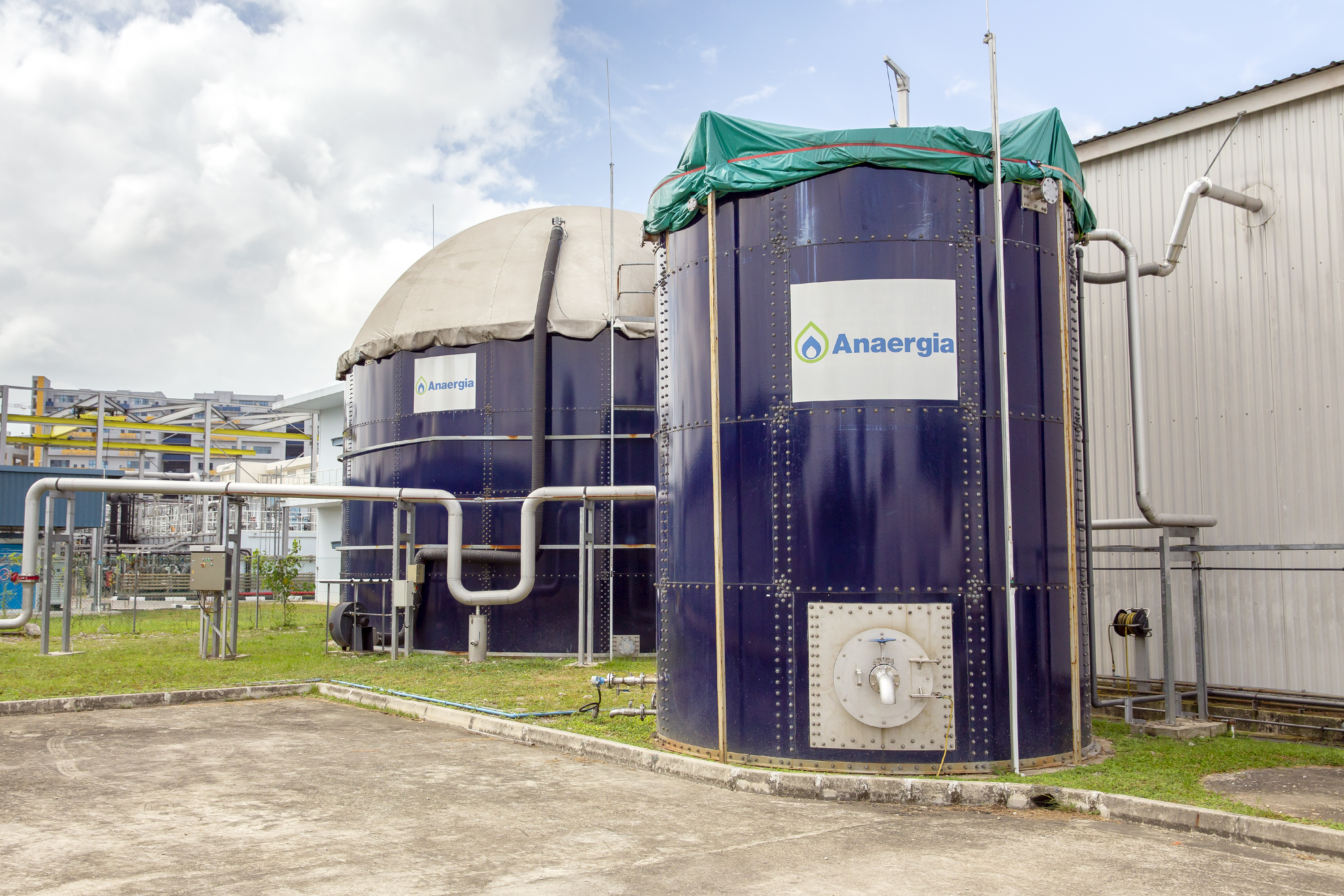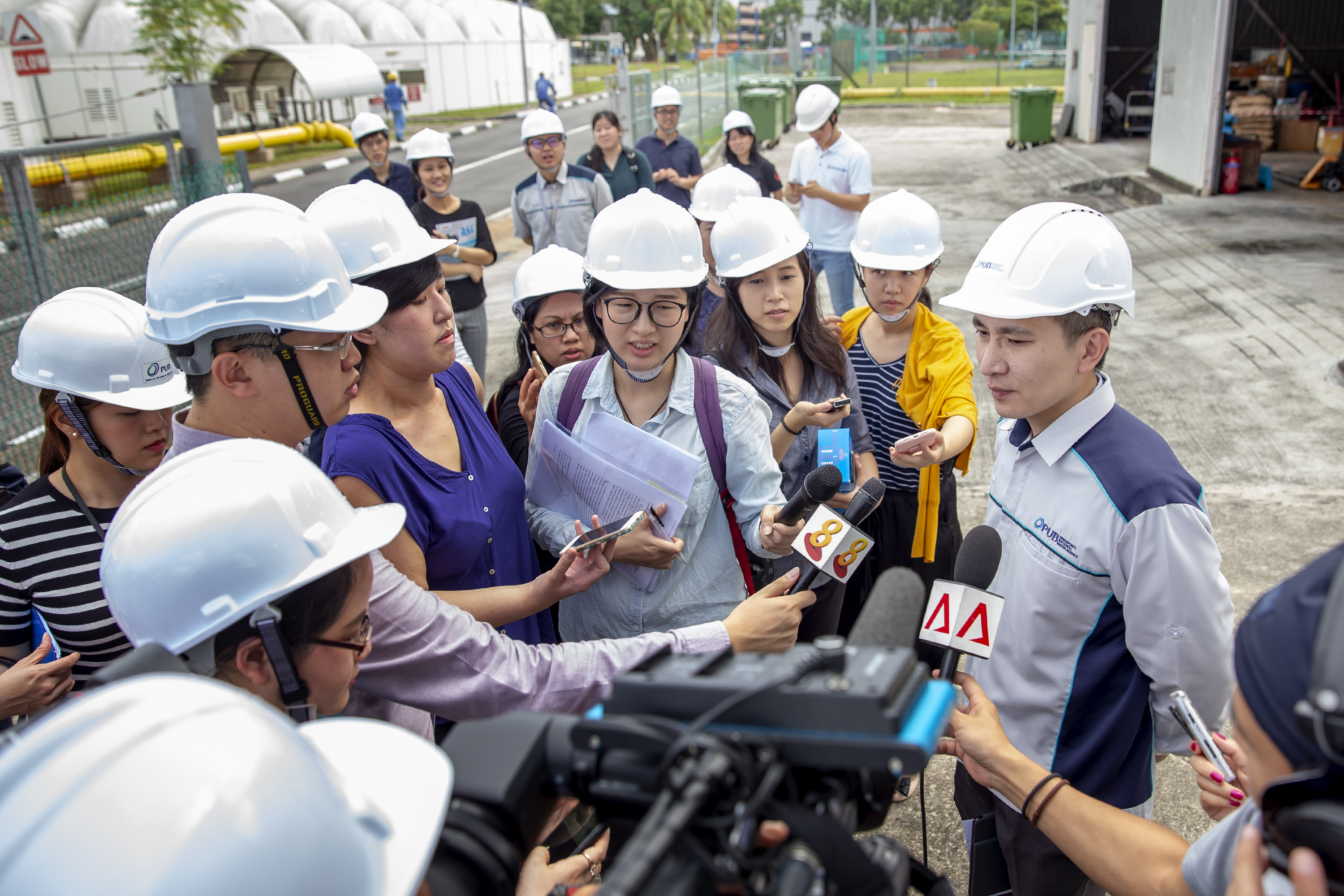
Ulu Pandan Water Reclamation Plant General Manager Kelvin Koh is one of the engineers involved in Singapore’s demonstration project to co-digest food waste and used water sludge. Through the demonstration project, PUB aims to produce more biogas for electricity generation, in line with long-term targets to achieve energy self-sufficiency, or producing as much energy as it uses, for used water treatment.
Kelvin joined PUB in 2008 after graduating from the Imperial College London. He has worked in various roles in the Technology and Policy & Planning Departments, where he looked at innovative technologies and policies to address Singapore’s water challenges. He joined the Water Reclamation Plant (WRP) Department in July 2017.Kelvin joined PUB in 2008 after graduating from the Imperial College London. He has worked in various roles in the Technology and Policy & Planning Departments, where he looked at innovative technologies and policies to address Singapore’s water challenges. He joined the Water Reclamation Plant (WRP) Department in July 2017.

Kelvin was very excited when PUB first announced the commencement of the co-digestion trial, as he had always been interested in PUB’S R&D efforts, which are aimed at increasing water resources, reducing production costs, and enhancing water security and system resilience.
He explains, “The co-digestion facility can treat up to 40 tons of combined food waste and used water sludge daily. The mixture is placed in an digester, and it is anaerobically digested to produce biogas, which can be converted to electricity. More biogas is expected as compared to digesting sludge alone due to higher calorific value in food waste.”

Kelvin shares that co-digestion technology has been applied in other countries such as the United States and Hungary, and he has visited the East Bay Municipal Utilities District Main Wastewater Treatment Plant in the United States where co-digestion is adopted. The challenge, however, is that the food waste has to be segregated at the start to remove the contaminants such as plastics and pre-treated to ensure the purity of the food waste.
One challenge of this project was finding good quality food waste for co-digestion. Kelvin recalls a period where the team received large amounts of vegetables, which posed operational challenges in its conveyance into pre-treatment process units. However, through discussions with the National Environment Agency (NEA) and Veolia (NEA’s appointed food waste collector), they were able to work out a more representative profile of the food waste required for co-digestion.
When asked whether this technology would be applied at existing and future WRPs in Singapore, Kelvin shared that the current digesters are not designed in this manner.
“However, this demonstration trial proves that there are synergies in co-locating waste and used water treatment facilities. This gives us the confidence to adopt co-digestion process at the future Tuas Nexus, made up of the Integrated Waste Management Facility (IWMF) and Tuas Water Reclamation Plant. The greatest satisfaction from this project is knowing my team and I played a part in helping our environment by exploring solutions to use less electricity, and contributing to energy self-sufficiency in used water treatment. It was also a great experience working closely with NEA at an inter-agency level to resolve operational issues and implement the co-digestion process to tackle the issue of food waste.” shared Kelvin.